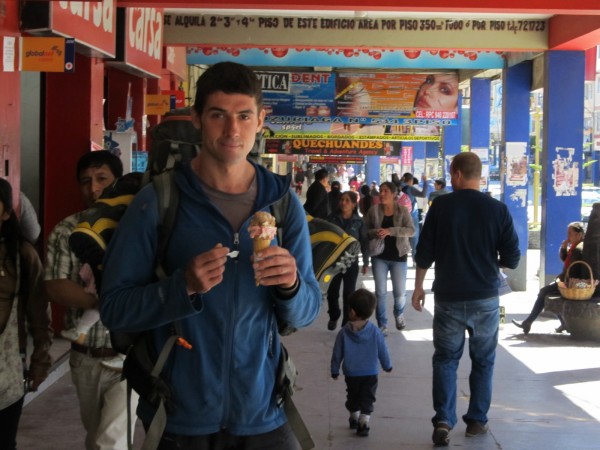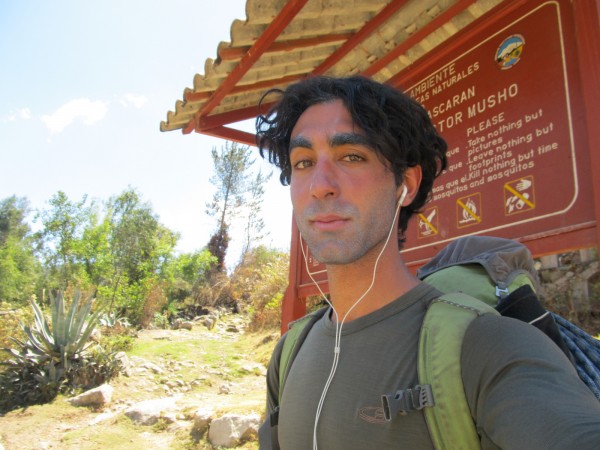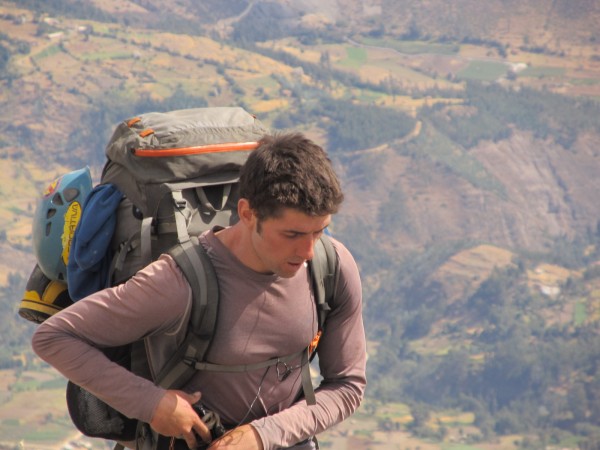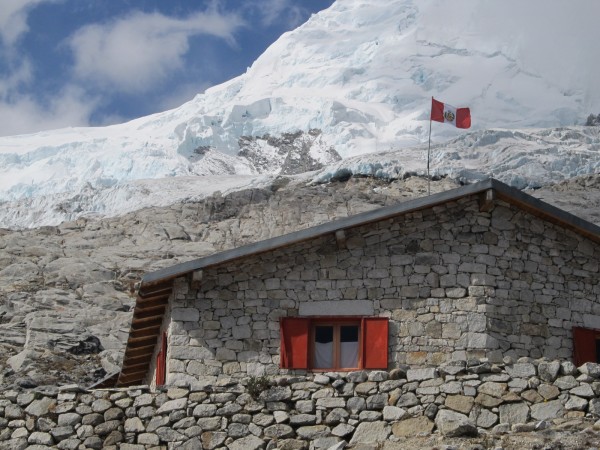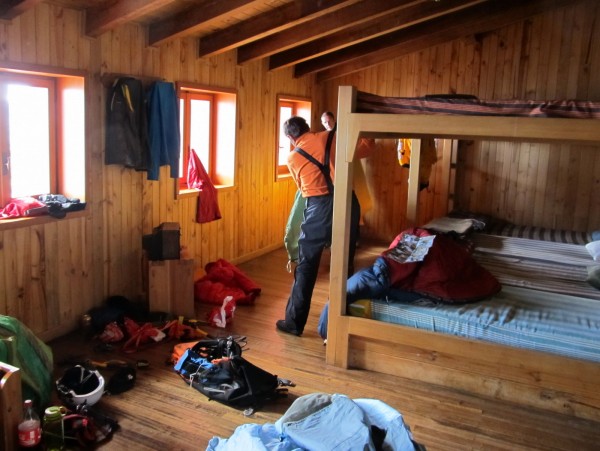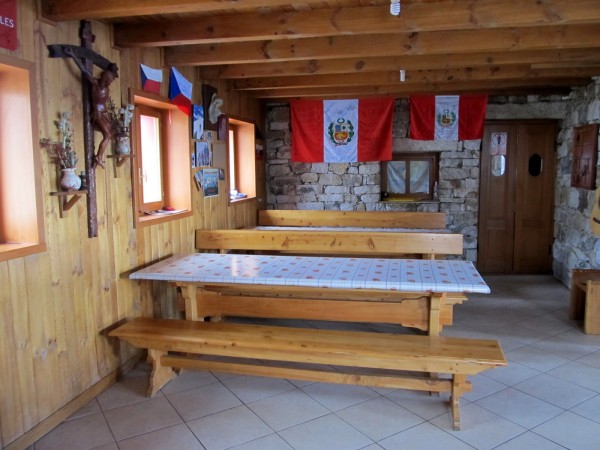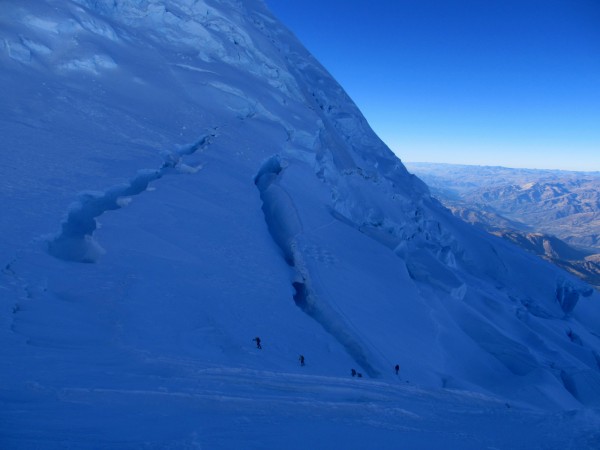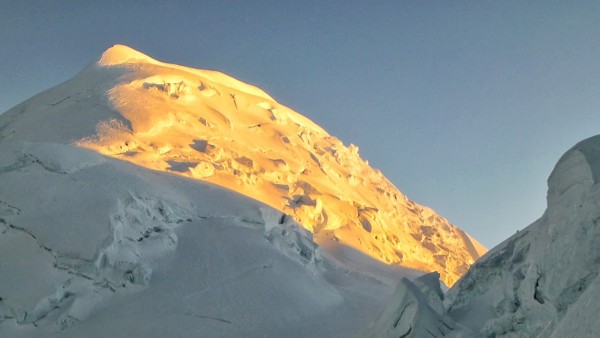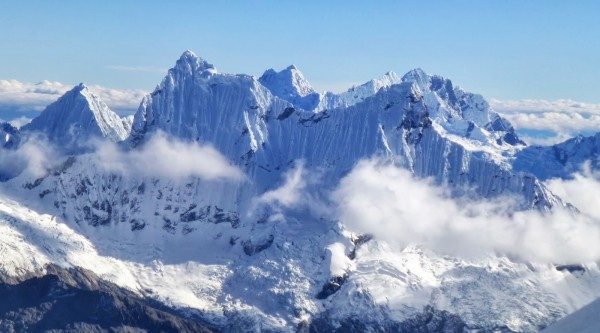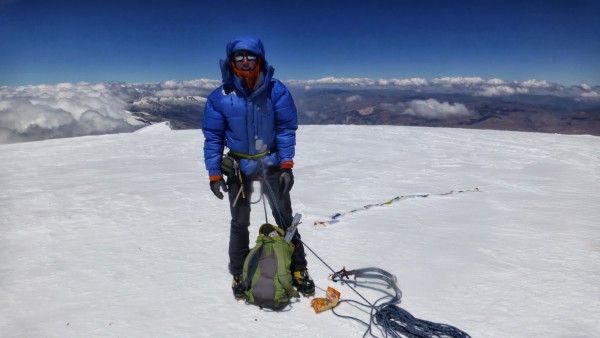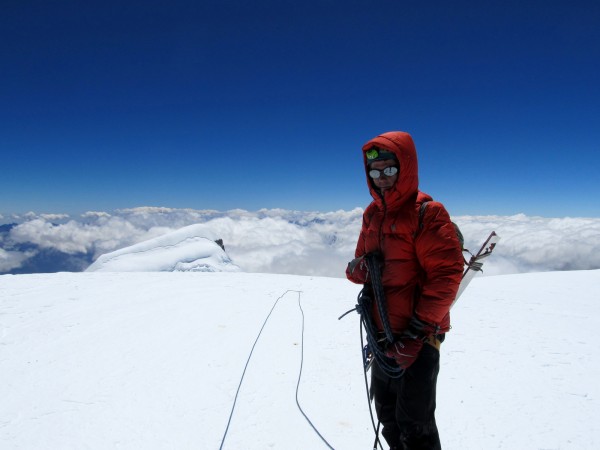Possessing not the slightest sense of urgency, I chatted with another gringo over breakfast until past nine when a frantic Vitaliy entered the room and said, "not to be a d#@&%e, but aren't we climbing a mountain today?" Given that the approach was less than a Whitney hike in height the urgency seemed a bit misplaced, but as in any good relationship concessions are necessary and I went downstairs to pack. Cue, "you're not packed yet?!"
An hour later we finally left the hostel and got some last-minute supplies: ice cream and chocolate. Finally on the collectivo at 10:30, we headed north towards Caraz and got off at the tiny town of Mancos. The trailhead is half an hour up a dirt road in a town called Musho, and we briefly confused the words for 2.50 with 250 as the price to get there. On this point: the prices stated in Brad Johnson's guidebook for taxis to and fro trailheads are outrageously overstated. Not only is it possible to take public transportation in lieu of taxis at an order of magnitude fewer soles to most trailheads, but the prices given for taxis are anywhere from 1.5 to 2 times too high. Has Peru experienced catastrophic deflation or is Johnson just the biggest gringo ever? I like to keep the tone of these trip reports positive, but given that I'm about to sell my reasonably new $350 tent for $150 due to a typo in a flyer, I'm hopeful this bit of schadenfreude will make be feel better.
At Musho we were mildly appalled to find that the trailhead is in a cemetery. We left the trailhead at 11:40, trekked through eucalyptus groves and farms on a nondescript footpath, finally found a real trail an hour later, and walked into the refugio at 3:10. Three and a half hours for 5500 ft--not shabby! At that pace we would be back at the refugio from the summit the next day before lunch.
Near the refugio is a Huascaran National Park kiosk where a guard checked our park passes and gave us the "if you die your parents will not be able to sue us" waiver. We signed away and entered the hut.
Immediately on your right as you enter there is a boot room modeled after those of the European huts; you're supposed to leave your mountain boots there and put on slippers. Farther down the hall from the boot room are the first of the dorms. Left of the boot room is the dining room, which is tiled and has several cafeteria style wooden tables. There are board games to pass the time and a little Franklin stove to keep the place cozy.
Across from the boot room are stairs to the upper floor where there are more dorms. We stayed at one of these, which was appropriately called "Chacraraju"; across from us two Austrians slept in their own room. This refugio sleeps sixty, but we four were its only patrons on our first night. On our second night Vitaliy and I were the only ones. It's awful that this magnificent hut, which has hardwood floors, running water, showers, and three-course meals, is ignored by the majority of climbers. When we asked some of them why they didn't stay at the refugio, they replied, "we like to camp." That's fine, but I would find it hard to have pride in camping if porters carried my tent!
That afternoon I ate nearly a pound of granola, which I supplemented with soup, rice, chicken, and potatoes at dinner downstairs. I felt as nauseous as I imagine I would feel if cake were determined not to be a risk factor for heart disease. I went to bed early that night but didn't sleep due to a combination of the time and the feeling that I was harboring a chest burster in my stomach.
My alarm went off at 11:30, but as I hadn't slept at all I declared that I was resetting it to 12:30 am. Miraculously, I slept for an hour and had no excuse to continue to sleep when the alarm went off again. An hour later I slipped off my down parka--the classic sign of an imminent winter hike--and we opened the hut door into the midnight mountainscape.
Up we went through polished slabs reminiscent of Tuolumne domes and arrived at the snout of the glacier in an hour. We found a ramp through what was otherwise a vertical ice wall and walked for a hundred feet until we found a place to stash Vitaliy's running shoes and for me to put on crampons. From here it was a long but uncomplicated march to the firn line, where we found a couple of tents at camp one. From there we went up firm snow until a serac barrier three thousand feet above the hut made us realize we were off-route. When we looked left we saw headlamps dancing around camp two a few hundred yards away.
A V-thread rappel and some down-climbing later we regained the normal route and walked up to camp two as dawn broke. Twelve Italians and a Peruvian guide were milling around camp drinking coffee as I walked into camp. "Buenos dias!" No response. Maybe they don't speak Spanish? "Good morning!" No response. Very weird. My only other experience with a group either that groggy or that rude was on Stok Kangri many years ago when a large group of French-speaking Swiss ignored my question about directions, which I asked in French and English.
As we quickly discovered, our strategy of foregoing The Shield, which is a slightly more technical and obscure route on Huascaran, so that we could use a broken trail was all for naught. The Italians got in line behind us as we broke trail for 3000 vertical ft to the summit. Around camp two the brutal wind that had blown all night abated, but as we'd ascended to nearly 20,000 ft and were still in the shade, I became very cold. I put on a down parka over three layers but continued to shiver. It crossed my mind that it was silly to continue while shivering, but I reasoned that trail-breaking and the approaching sunshine would warm me. To my detached amusement the shivering continued unabated to the summit.
Vitaliy and I swapped positions in front every few hundred yards. At around 21,500 ft Huascaran has a great plateau, and its convexities convince you that the summit is just over the horizon. Like Misery Hill's perverse older brothers, these convexities trick you over and over into thinking you're nearly at the summit. Countless front line swaps later, I was reduced to one step per two or three breaths.
Step. Sink in twelve inches. Shift weight forward. Sink a few more inches. Breath. Breath again. Repeat.
I finally trudged past some prayer flags at 12:40 pm. The summit plateau was so broad and it was so cloudy that the summit views were awful, but we were done! It was the literal and figurative high point of our trip to Peru--we were on top. It was all down from there: down to the hut, down to Huaraz, down to the smoggy mess of late summer Los Angeles, down to responsibility and work.
Though mountaineers often admonish that "the summit is only halfway there," ninety-nine percent of the time the summit is temporally at least three-quarters of the way there. Though the snout of the glacier stretched on twice as far as we remembered, we arrived at the shoe stash 6000 ft below three hours from the summit. Flogged and beaten by the hardest slog we'd ever done, we just sat on our backpacks and flapped our mouths in the sunshine until the toilet at the hut beckoned and we finally stepped off the glacier. As I walked down the polished slabs somewhere very near the limit of granite-rubber friction, I remembered walking off of Lembert Dome at sunset after one of my first trad climbs with Kedron, then much later with Vicky, Lukasz, and Nicole.
That night I didn't wait for the hut dinner; I ate the rest of my granola, ate the rest of my oatmeal, and passed out just after sunset. I awoke at 4 am when an indignant Vitaliy cursed himself for having forgotten his pee bottle and left his bunk to use the restroom like the rest of us. I fell asleep again and didn't wake up until eight, fourteen hours after turning in.
And now back in Huaraz with a little more than a day left, I find myself asking: when will I come back? Will the cathedral finally be finished next time? How many more women will be wearing tights instead of the beautiful Peruvian skirts and embroidered hats? Will Google streetview have conquered all of Ancash? How many more polished slabs will climate change uncover? Will I see a chinchilla again? Will I come with such an awesome partner? Will I have a wife who will be pissed off that I'm here? Will she be with me?
Idle reverie is guiltless now. One more day of that, then a quick flight to LA, a quick lunch with Dennis, and a quick dinner with mom and dad before SQUAMISH!
Since the Chacraraju trip report which I posted on Supertopo, I wrote a couple of other entries on my blog: one about a grade V 5.10+ on La Esfinge and another about vomiting and a unbelievably good grade IV 5.11+ called Karma de los Condores.
